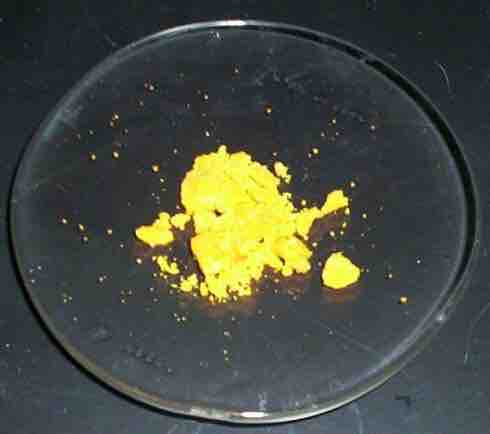Iron is a metal in the first transition series and forms much of the Earth's outer and inner core. Iron's very common presence in rocky planets like Earth is due to its abundant production as a result of fusion in high-mass stars. This is where the production of nickel-56 (which decays to the most common isotope of iron) is the last nuclear fusion reaction that is exothermic.
Properties of Iron
Like other Group 8 elements, iron exists in a wide range of oxidation states, although +2 (ferrous) and +3 (ferric) are the most common. Elemental iron occurs in meteoroids and other low-oxygen environments but is reactive to oxygen and water. Fresh iron surfaces appear lustrous silvery-gray but oxidize in normal air to give iron oxides, also known as rust. Unlike many other metals which form passivating oxide layers, iron oxides occupy more volume than iron metal. Therefore, iron oxides flake off and expose fresh surfaces for corrosion.
Pure iron is soft (softer than aluminium) but is unobtainable by smelting. The material is significantly hardened and strengthened by impurities from the smelting process, such as carbon. A certain proportion of carbon (between 0.2% and 2.1%) produces steel, which may be up to 1,000 times harder than pure iron. Crude iron metal is produced in blast furnaces where ore is reduced by coke to pig iron, which has a high carbon content. Further refinement with oxygen reduces the carbon content to the correct proportion to make steel. Steels and low-carbon iron alloys with other metals (alloy steels) are by far the most common metals in industrial use due to their great range of desirable properties and the abundance of iron.
Iron chemical compounds, which include ferrous (Fe2+) and ferric (Fe3+) compounds, have many uses. Iron oxide mixed with aluminium powder can be ignited to create a thermite reaction used in welding and purifying ores. Iron forms binary compounds with the halogens and the chalcogens.
Aside from the ferric and ferrous oxidation states, iron also occurs in higher oxidation states. An example is the purple potassium ferrate (K2FeO4) which contains iron in its +6 oxidation state. There are also many mixed valence compounds that contain both iron(II) and iron(III) centers, such as magnetite and Prussian blue (Fe4(Fe(CN)6)3). The latter is used as the traditional "blue" in blueprints. Prussian blue is also used as an antidote for thallium and radioactive cesium poisoning.
The iron compounds produced on the largest scale in industry are iron(II) sulfate (FeSO4·7H2O) and iron(III) chloride (FeCl3). The former is one of the most readily available sources of iron(II). Iron(II) compounds tend to be oxidized to iron(III) compounds in the air.
Iron reacts with oxygen in the air to form various oxide and hydroxide compounds; the most common are iron(II,III) oxide (Fe3O4) and iron (III) oxide (Fe2O3). Iron(II) oxide also exists, although it is unstable at room temperature. These oxides are the principal ores for the production of iron. They are also used in the production of ferrites, useful magnetic storage media in computers and pigments. The best known sulfide is iron pyrite (FeS2), also known as fool's gold owing to its golden luster. The ferrous halides typically arise from treating iron metal with the corresponding binary halogen acid to give the corresponding hydrated salts. Iron reacts with fluorine, chlorine, and bromine to give the corresponding ferric halides. Ferric chloride is the most common.

Iron(III) chloride hexahydrate
Hydrated iron(III) chloride, also known as ferric chloride.
Biological Uses of Iron
Iron plays an important role in biology, forming complexes with molecular oxygen in hemoglobin and myoglobin. These two compounds are common oxygen transport proteins in vertebrates. Also, iron has an essential role in the formation of deoxyribonucleotides by ribonucleotide reductase. Iron is also the metal used at the active site of many important redox enzymes dealing with cellular respiration, oxidation, and reduction in plants and animals.